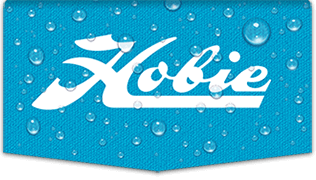|
That's what you want to do, yes. Unfortunately in this case, some holes were outside the soft spot and I had to re-drill while injecting to try and fill the entire void.
Here's my procedure:
The first thing I do is tape of the area and then carefully press or tap on the soft area to try and identify the outline of the soft spot. This can be a little tricky, as it's not always a clear line. There can be a little guess work involved. Then I mark my holes every inch or two along the perimeter, just on the inside of the line. Put one hole in the center (and only one). The difficulty that I always run into is that you want to make sure you get your holes as close to the edge of the soft spot as possible, but inside the soft spot. If you drill them too far out, you'll miss the soft spot and the air & epoxy will be trapped and unable to escape.
Once all my holes are marked, I take a small drill bit (I think I've been using a #31 or 1/8" bit) and carefully drill through the gel coat and outer layer of fiberglass, with very light pressure. Once you're through the outer layer, stop. You'll want to very, very lightly drill through the foam core (but not the inner layer of fiberglass). I'd recommend just twirling the drill bit in the hole with your fingertips, that should do it.
When I've got all my holes drilled, I mix my west systems 105 epoxy, 206 hardener and filler (I use 404 for high compression areas, or 408 for lightweight areas). I usually mix about 5 pumps of epoxy at a time. This soft spot took me 10 pumps total. When mixing the filler, I want to keep the epoxy thin enough to flow through the soft spot. I typically go for a syrup-like mixture. Then I just start injecting the epoxy into the center hole with a syringe, and let it flow out towards the perimeter "breather" holes. I find that it can be helpful to press on the center of the soft spot a few times after a while, using moderate pressure, to "pump" the epoxy towards the holes. When epoxy starts flowing from a breather hole, I cover each one with tape to direct the epoxy towards the next hole in turn, until the entire soft spot is filled. I then remove the tape and let it ooze out freely, wiping it up occasionally, until it hardens. It allows the surface of the deck to even out a little.
Once fully cured, I remove the tape and take a chisel or sharp knife to cut the epoxy "plugs" flush. I could call it quits there, but I prefer to try and hide the soft spot repair, so I drill the holes back down slightly with a somewhat larger drill bit and mix some gel coat paste to match the color of the surrounding gel coat and fill in the holes. I'll have to use tape for the ones in the non-skid, as gel coat in the non-skid makes a mess. Once that's done, I'll probably have to lightly sand down the holes (800, 1000, 1200, 1500) and buff out the scratches.
|







